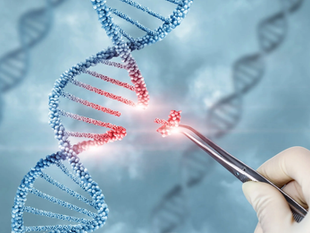
So, last month, I got into the University of Pennsylvania through early decision, and I'm looking forward to attending college in Philadelphia this fall! A major I'm currently considering for college is Biophysics, which is probably one of the lesser-known majors. I, for one, only learned it while doing some research for my college application. Math has always been my strong subject, and I’ve built confidence working in it. Even with this path, I’ve rarely considered the field of pure mathematics and reason. Instead, I wanted to incorporate it into whatever I do in the future. With this view, biophysics is a possible path. On the Penn majors list, it describes biophysics as "a major designed for students who are planning a career in biological or medical research and who desire depth in the physical and mathematical aspects of the biosciences.
Biophysics seeks to study biological systems using principles from physics, along with other things like mathematics and chemistry, such as determining physical properties of objects at the atomic level or studying various data sets and making models. By bridging the biological sciences and the physical sciences, more complex phenomena can be observed and studied in a spectacular way. A famous application of biophysics was in discovering the structure of DNA in 1953. DNA and genetic studies are part of biology, but making a model and sequencing and studying the genome is a lot like math and physics. Since then, technology has advanced to the point of being able to map out an entire human genome (appr. 3 billion base pairs) in a matter of hours! A Stanford research team holds the record for the fastest DNA sequencing technique, which they used to sequence an entire human genome in five hours. With all the data scientists have collected from human genomes, biophysical techniques must be used to analyze these vast quantities.

These biophysical techniques include electrophysiology, hydrodynamics, microscopy and imaging, and modeling. For me, electrophysiology and hydrodynamics sound quite foreign, but the other two sound a little familiar. Developments in microscopy and imaging are cool because they've allowed scientists to observe objects down to the size of atoms. An example of imaging you may be familiar with is magnetic resonance imaging (MRI). MRI uses physics properties like magnetism and nuclear physics to produce detailed images of everything in the body. These images help guide physicians in diagnosing medical situations and deciding a course of treatment. Models and simulations are used to study processes or other things closer, especially when not enough is known yet about it. Mathematical models are common and useful for biologists studying molecular interactions on the cellular level.
So, what might a career as a biophysicist look like? It involves looking at questions about things like biological processes and taking a physics-based approach to study them. Biophysicists strongly rely on advancements in technology to help them in studying these processes; these technological advancements can help them create models and study what they're doing research on. Because of this connection to technology, biophysicists have contributed to many technological breakthroughs and processes related to imaging and microscopy. With so much effort and money spent today on technological advancements, the future certainly looks bright for biophysics! Thanks for reading, and I hope this has made you more interested in the field of biophysics! I've certainly learned a lot from my research.









Congrats on your acceptance to UPenn! BTW, love your new hairstyle
Congratulations, I wish you well in your future studies. Maybe you will make another technological breakthrough.
Hi James,
Congratulations on your U. Penn acceptance!
Another aspect of biophysics that should be mentioned is molecular computational biophysics. In this sub-discipline biological molecular shapes and functions are modeled with mathematical methods, such as molecular mechanics and quantum mechanics (MM and QM).
The UAF chemistry department has a world-readable website that incorporates some of these tools. Our students use this for labs and research.
If you are interested in pursuing this flavor of biophysics at U. Penn, you might end up taking several chemistry courses such as physical chemistry (which requires a calculus pre-requisite) and biochemistry.
Best Regards,
John Keller
Professor of Chemistry Emeritus